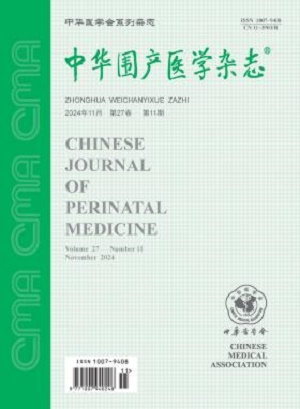不同情况下智能手机应用对基于图像的新生儿血清胆红素水平自动估计准确性的影响
Q4 Medicine
引用次数: 1
摘要
目的研究影响智能手机软件应用程序(APP)准确性的因素。APP是一种基于图像的新生儿胆红素自动检测技术。方法对2017年8-12月在东南大学附属徐州医院新生儿科住院的179例黄疸新生儿进行前瞻性研究。如果需要抽血测定血清总胆红素(TSB),还需要检测胸骨上的经皮胆红素(TcB)和AIB(36例同时检测了眉间或可见的最暗黄色区域)。使用基于手机的新生儿黄疸监测应用程序和OPPO R11智能手机拍摄的图像测量AIB的浓度(华为Mate 8和iPhone 6也拍摄了55例)。分析了AIB与TcB相比的准确性和非劣性,AIB与TSB的相关性和一致性,以及AIB在预测TSB中的价值。采用非劣效性试验、学生t检验、方差分析、Pearson相关分析、Bland-Altman图和受试者操作特征曲线作为统计方法。结果179例新生儿,平均胎龄(36.2±2.1)周,平均出生体重(2871±735)g,表明AIB的准确度并不低于TcB。此外,根据出生后时间(≤48小时和>48小时)、胎龄(≤35周和>35周)和日间亚组,AIB在不同亚组中的准确性并不低于TcB。在夜间亚组中,ŞAIB-TSBŞ和ŞTcB-TSB之间的平均差异为1.47 mg/dl[95%CI:(1.08-1.87)mg/dl],这表明AIB的准确性低于TcB。根据所有数据,AIB和TSB之间存在良好的相关性(r=0.788)和高度一致性[96.4%(238/247)的样本在(-4.75至5.71)mg/dl]的95%一致性范围内。在不同的亚组中也发现了这样的结果,如智能手机品牌、检测区域、出生后时间和胎龄。日间亚组AIB与TSB的相关性和一致性(r=0.924,98.4%)明显强于夜间亚组(r=0.727,87.5%),眼值减去TSB的绝对值(|eyular value TSB|)与|AIB-TSB|的平均差值为2.13mg/dl[95%CI:(1.68-2.58)mg/dl],表明AIB的准确性高于眼部估计。ROC曲线下面积、AIB预测TSB>10、>15和>20mg/dl的敏感性和特异性分别为0.94、93%和85%;分别为0.89、75%和87%;分别为0.84、50%和88%。结论AIB在准确性上不低于TcB,并且明显优于眼部估计。AIB与TSB之间具有良好的相关性和较强的一致性。AIB的准确性以及AIB和TSB之间的相关性和一致性不太可能受到出生后时间、胎龄、智能手机品牌和检查区域的影响,但在夜间检查时会受到很大影响。因此,建议在白天明亮的自然光下检测AIB。关键词:黄疸,新生儿;胆红素;参考值;智能手机;软件;图像处理,计算机辅助本文章由计算机程序翻译,如有差异,请以英文原文为准。
Influences on accuracy of automated image-based estimation of neonatal serum bilirubin level using smartphone application under different circumstances
Objective
To study the influence factors on the accuracy of a smartphone software application (APP) , which is an automated image-based bilirubin (AIB) testing technique for neonatal bilirubin.
Methods
This was a prospective study involving 179 jaundiced neonates admitted to the Department of Neonatology of the Affiliated Xuzhou Hospital of Southeast University from August to December, 2017. If blood sampling was required to determine total serum bilirubin (TSB), the transcutaneous bilirubin (TcB) and AIB on the sternum (glabella or the visible darkest yellow area were tested in 36 cases at the same time) were also tested. The concentrations of AIB were measured using a mobile phone-based neonatal jaundice monitoring APP with images taken by OPPO R11 smartphone (55 cases were also taken by Huawei Mate 8 and iPhone 6). The accuracy and non-inferiority of AIB comparing with TcB, the correlation and consistency between AIB and TSB and the value of AIB in predicting TSB were analyzed. Non-inferiority trial, student's t test, variance analysis, Pearson's correlation analysis, Bland-Altman plots and receiver operating characteristic (ROC) curve were used as statistical methods.
Results
A total of 179 neonates were enrolled in this study with the mean gestational age of (36.2±2.1) weeks and the mean birth weight of (2 871±735) g. Based on all data, the mean difference between the absolute value of AIB minus TSB (|AIB-TSB|) and the absolute value of TcB minus TSB (|TcB-TSB|) was 0.77 mg/dl (1 mg/dl=17.1 μmol/L) with the 95%CI of (0.60-0.95) mg/dl, suggesting that the accuracy of AIB was not inferior to that of the TcB. Furthermore, AIB was not inferior to TcB in its accuracy in different subgroups based upon the time after birth (≤48 h and >48 h), gestational age (≤35 weeks and >35 weeks) and in the daytime subgroup. In the nighttime subgroup, the mean difference between∣AIB-TSB∣and∣TcB-TSB∣was 1.47 mg/dl [95%CI: (1.08-1.87) mg/dl], which indicated that the accuracy of AIB was inferior to that of the TcB. There were good correlation (r=0.788) and highly consistency between AIB and TSB based on all data [96.4% (238/247) of the samples were within the 95% limits of agreement of (-4.75 to 5.71) mg/dl]. Such results were also found in different subgroups, such as smartphone brands, detection areas, the time after birth and gestational age. The correlation and consistency between AIB and TSB in daytime subgroup (r=0.924, 98.4%) were obviously stronger than those of the nighttime subgroup (r=0.727, 87.5%). The mean difference between the absolute value of ocular value minus TSB (|ocular value-TSB|) and |AIB-TSB| was 2.13 mg/dl [95%CI: (1.68-2.58) mg/dl], implying a superior accuracy of AIB than ocular estimation. The areas under the ROC curves, the sensitivity and the specificity of AIB for the prediction of TSB >10, >15 and >20 mg/dl were 0.94, 93% and 85%; 0.89, 75% and 87%; and 0.84, 50% and 88%, respectively.
Conclusions
AIB is not inferior to TcB in accuracy, and is significantly superior to ocular estimation. There are good correlation and strong consistency between AIB and TSB. The accuracy of AIB, and the correlation and consistency between AIB and TSB are less likely to be affected by the time after birth, gestational age, smartphone brands and areas being examined, but are largely affected when examining during nighttime. Therefore, it is recommended to detect AIB at daytime with bright natural light.
Key words:
Jaundice, Neonatal; Bilirubin; Reference values; Smartphone; Software; Image processing, computer-assisted
求助全文
通过发布文献求助,成功后即可免费获取论文全文。
去求助
来源期刊

中华围产医学杂志
Medicine-Obstetrics and Gynecology
CiteScore
0.70
自引率
0.00%
发文量
4446
期刊介绍:
Chinese Journal of Perinatal Medicine was founded in May 1998. It is one of the journals of the Chinese Medical Association, which is supervised by the China Association for Science and Technology, sponsored by the Chinese Medical Association, and hosted by Peking University First Hospital. Perinatal medicine is a new discipline jointly studied by obstetrics and neonatology. The purpose of this journal is to "prenatal and postnatal care, improve the quality of the newborn population, and ensure the safety and health of mothers and infants". It reflects the new theories, new technologies, and new progress in perinatal medicine in related disciplines such as basic, clinical and preventive medicine, genetics, and sociology. It aims to provide a window and platform for academic exchanges, information transmission, and understanding of the development trends of domestic and foreign perinatal medicine for the majority of perinatal medicine workers in my country.
 求助内容:
求助内容: 应助结果提醒方式:
应助结果提醒方式:


